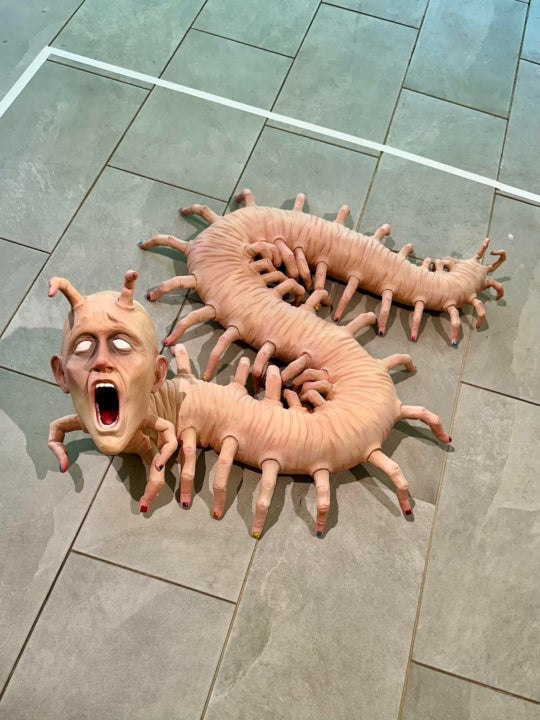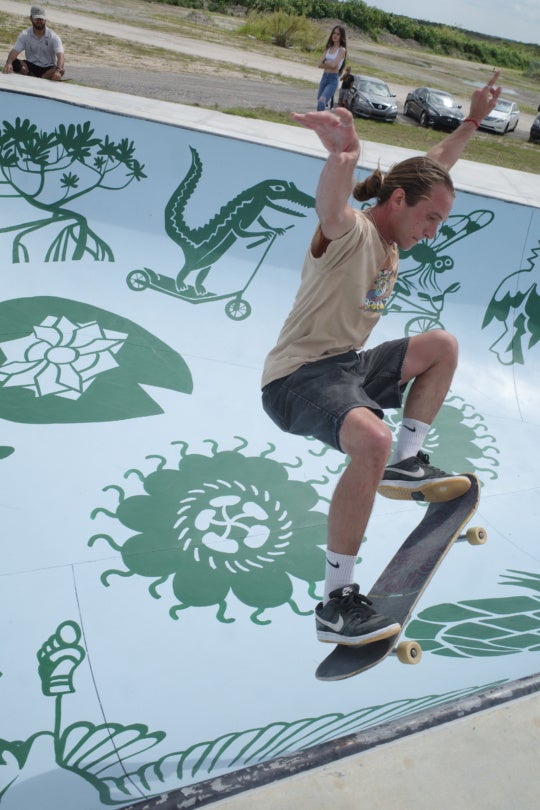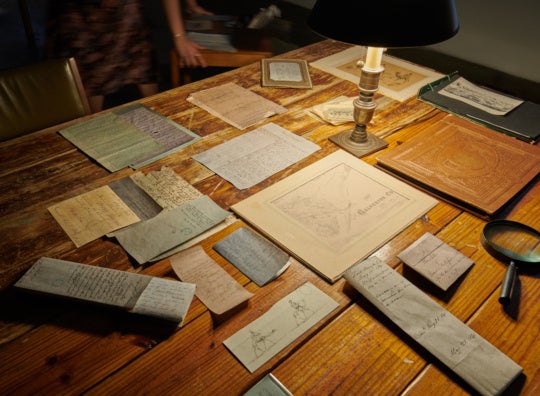
Does deprivation make for better art? It’s one of the possibilities proposed in Alumbrones (Illuminations), a documentary about Cuban art opening in Los Angeles on January 16 and available for online streaming on iTunes, Xbox, Playstation, Amazon, and Vimeo. With the economic and psychological walls separating Cuba from the West crumbling since Obama’s December 17 announcement that the U.S. would normalize relations with the country, the film offers a timely glimpse behind the curtain of a largely closed society and the impact politics has had on its creative class.
Beautifully photographed by cinematographer Esteban Malpica, the aesthetics of Cuba as seen in Alumbrones have become strangely familiar to American eyes despite a longtime embargo. Director Bruce Donnelly and Malpica capture the vintage cars, impossibly lush tropical landscape, and tatty glamour that only adds to the island’s mystique. It is a mystique often reaffirmed here in its people, equal parts exoticism and resignation.
“It was very easy to become a Surrealist here,” says artist Luis Rodriguez NOA in the film, “just draw what’s happening.”

Donnelly’s documentary takes the measure of the place and its people, interviewing 12 Cuban artists, most of them living in the tumultuous creative hub of Havana, and finds a common theme to their work, whether they are teenagers influenced by graffiti and street life or longtime icons of Cuban art like Pedro Pablo Oliva, whose masterwork El Gran Apagón is considered the Cuban Guernica for capturing some of the darkest days in the country’s history. Testament to these artists’ resolve, Oliva continues to paint despite a telltale Parkinson’s tremble. Individual trouble seems secondary, Oliva suggests, considering all these artists have been through on the national front.
In these interviews, Donnelly uncovers not only the unique character of each artist’s road to art-making but a shared lexicon of creation rooted in the Cuban experience: a frequent use of recycling and a reliance on any materials at hand due to the scarcity of supplies; art-making as escapism and coping strategy; the inspiration of a vibrant street life; and most strikingly, a timelessness to work made without the influence of trends or outside forces. Several artists speak passionately about the influence of Cuba’s geography, specifically the sea, in the way a Japanese artist might conjure Mt. Fuji or an American the West. What would be seen as deprivations in other cultures, like a lack of Internet and consumer goods, are invoked by many of these artists as boons to creativity. Without the distractions of a consumer society, they create more, many attest. And without outside influence, artists turn inward and find agency and inspiration in their fellow Cuban artists’ work.

That sense of art created in a relatively closed world comes through in a shared aesthetic seen in many of the artists’ works: a devotion to pattern and rich colors; to magical realist, whimsical animated figures; and an abiding enchantment with the human figure, all of which suggest a remarkably cohesive national style. A late-blooming artist who began working well into her 30s, Sandra Dooley creates iconic work filled with elongated female figures in intense colors, with cats draped around their shoulders. Testifying to the national imperative to transform refuse into ornament, and to waste nothing, the walls of Dooley’s home by the sea are encrusted with broken shards of dinnerware, gifts from friends and neighbors, and turned into a mosaic.

The defining urge to craft art from the rubble originates, suggest several artists, in Cuba’s “Special Period.” With the fall of the Berlin Wall and the dissolution of the Soviet Union, the island country was plunged into a period of scarcity, with goods no longer delivered from partner countries. That “Special Period” was cruelly prefaced by one in the ’80s of creative fertility, with dance, theater and film holding enormous sway. One artist recalls the endless cinema queues monitored by police for showings of films by Russian director Andrei Tarkovsky’s or Jean-Luc Godard.
Alumbrones takes its title from the burst of light within this darkness that allowed artists to create and thrive despite constant electrical blackouts so pernicious that large swaths of Oliva’s El Gran Apagón were painted by candlelight.
In that intense period of deprivation, “You really had to expand your imagination,” says artist and teacher Edel Bordón, whose classes were suddenly taught without brushes, paint, or canvas. Instead, students turned to nature and those available resources to make art. Bordón and his partner Yamile Pardo talk about a special inventiveness that extended to all dimensions of Cuban life, including the kitchen where celery and protein powder for the elderly were transformed into soups and desserts.
In light of recent political developments, Alumbrones offers not only a provocative meditation on the shared spirit and circumstance of Cuban art but a consideration of how so much that is seen as advantage in the West—a barrage of imagery, 24-7 media stimulation, an avalanche of consumer goods and material wealth—might be less an advantage and more a distraction.
Felicia Feaster is the editor in chief at HGTVGardens, the co-author of Forbidden Fruit: The Golden Age of the Exploitation Film, and writes frequently about art and culture for a number of Atlanta and national publications.





